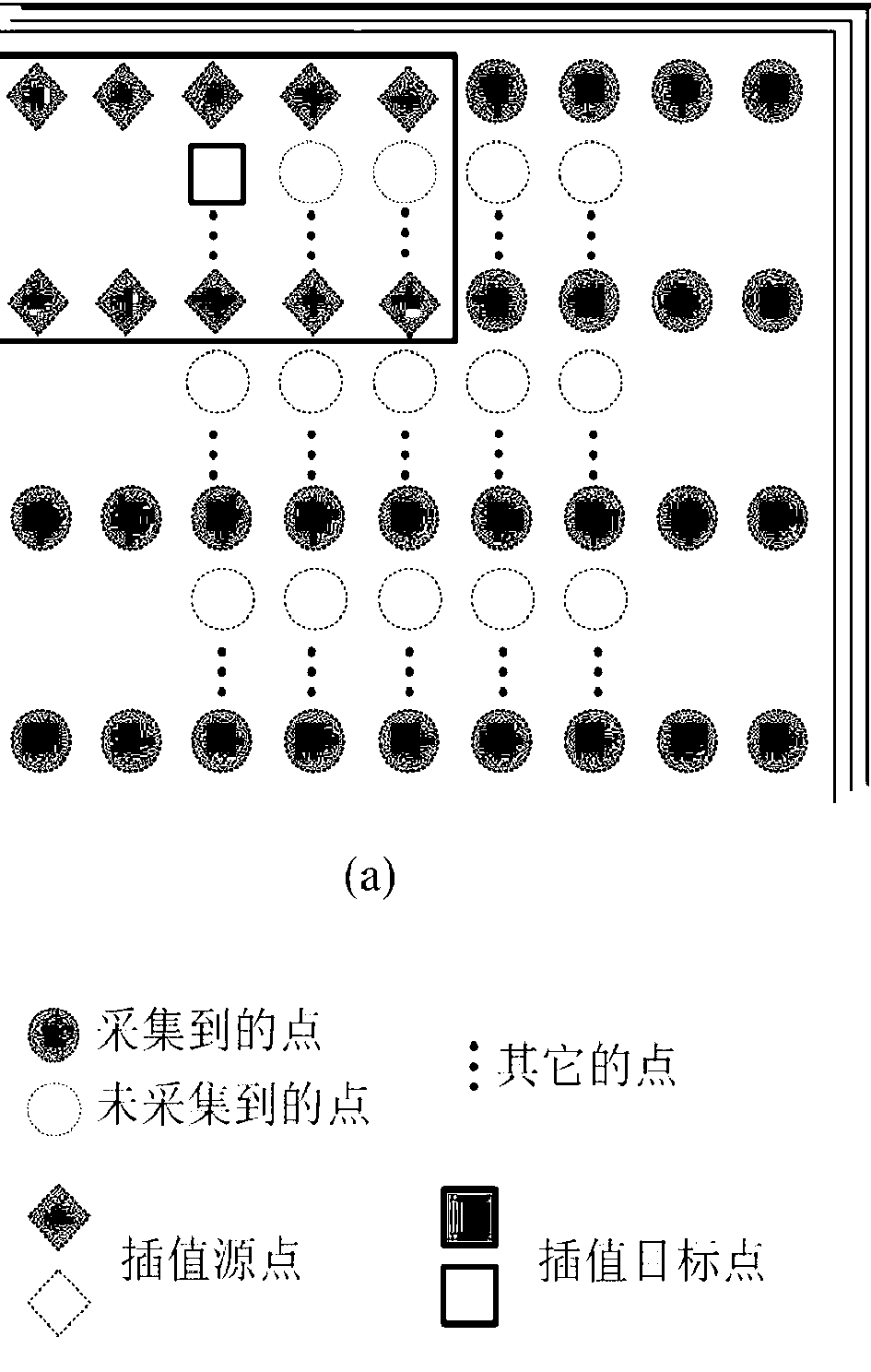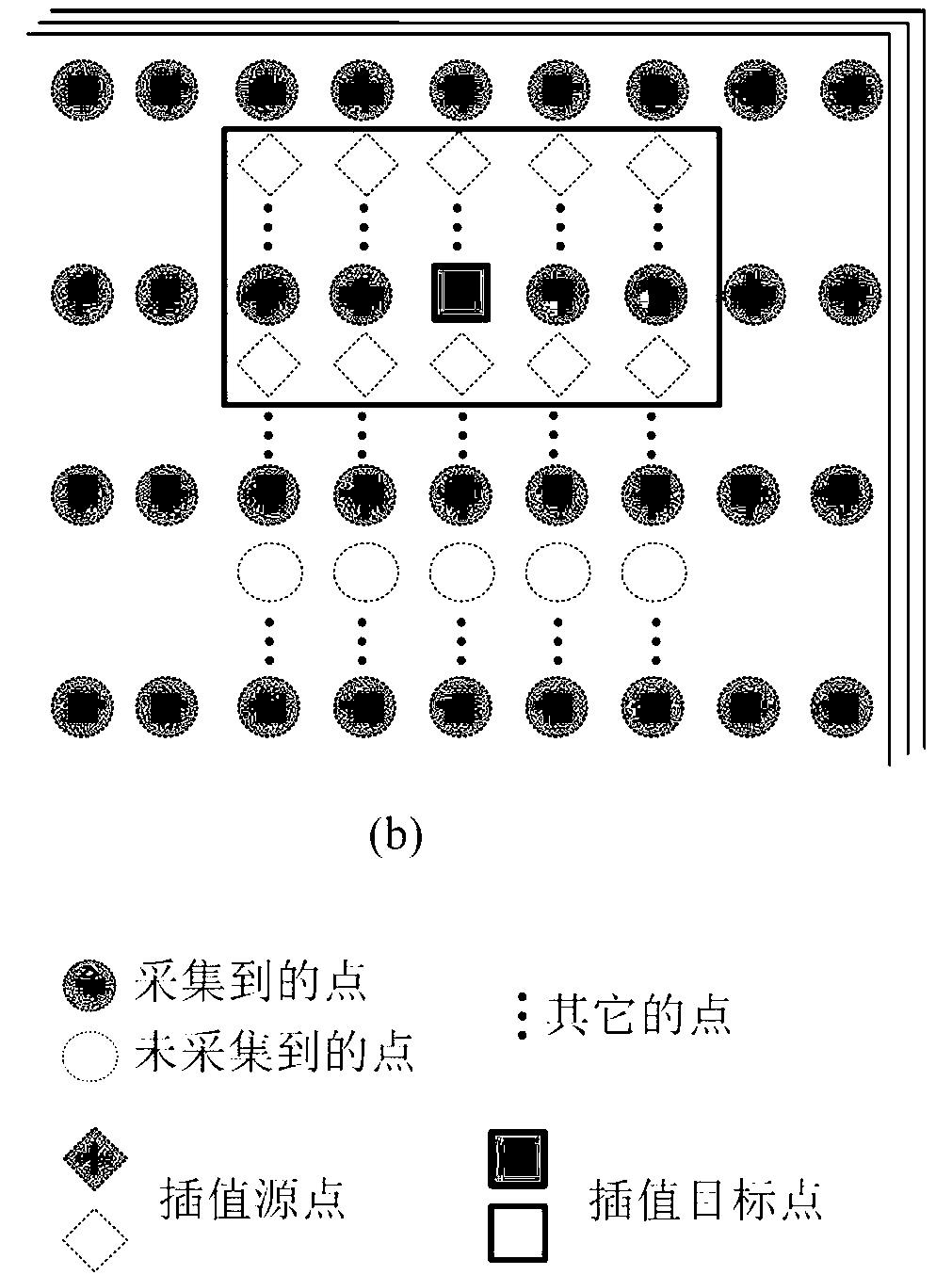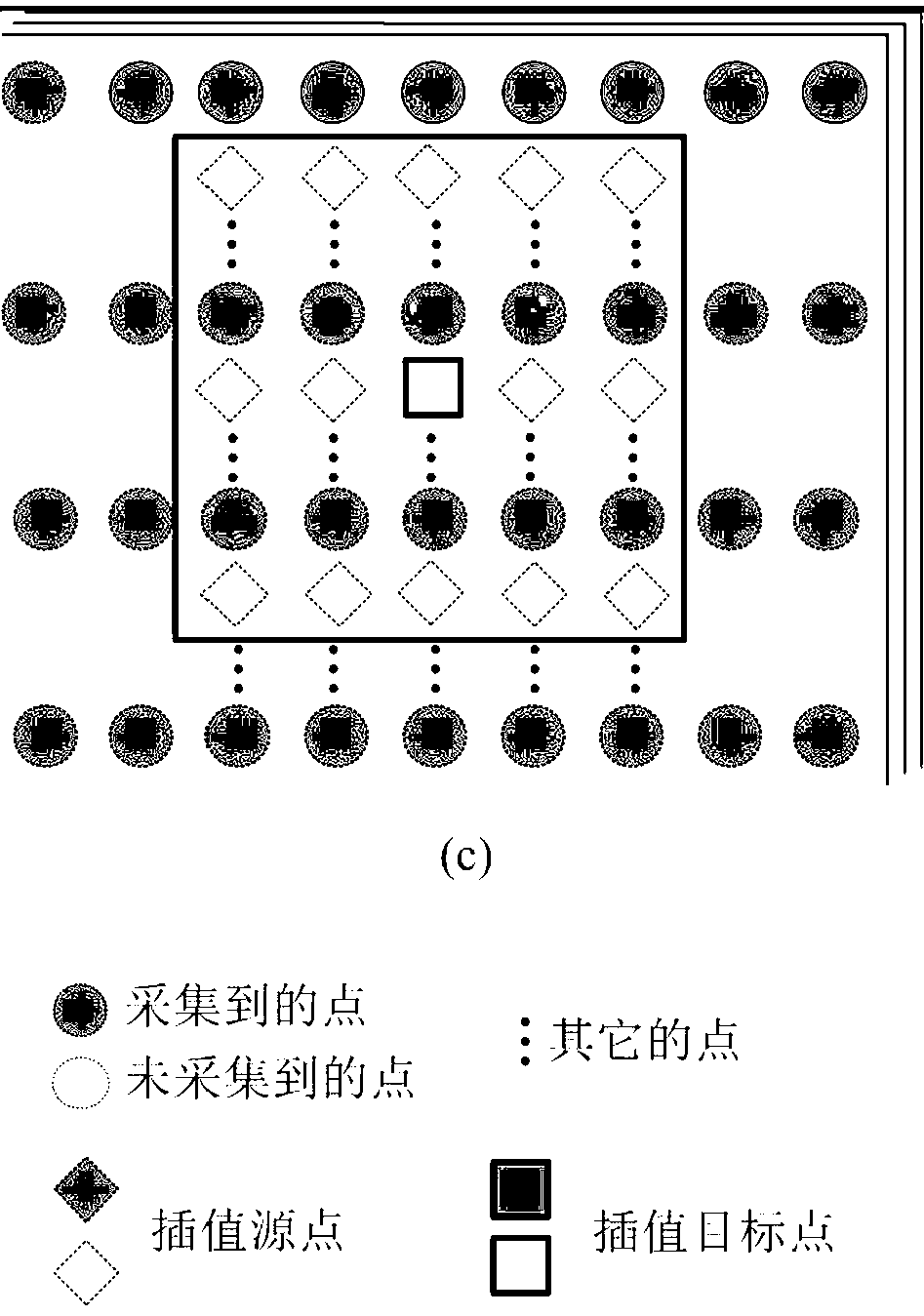Magnetic resonance parallel imaging method of multi-constraint sliding window
An imaging method and sliding window technology, which are applied in magnetic resonance measurement, measurement using nuclear magnetic resonance imaging system, measurement of magnetic variables, etc., can solve problems such as noise amplification, consistent interpolation coefficients, and inability to meet imaging real-time requirements.
- Summary
- Abstract
- Description
- Claims
- Application Information
AI Technical Summary
Problems solved by technology
Method used
Image
Examples
Embodiment 1
[0045] A multi-constrained sliding window magnetic resonance parallel imaging method includes the following steps in sequence.
[0046] (1) Use multi-channel coils to fully sample the middle area of K-space, and respectively fit to obtain forward reconstruction constraint weights, backward reconstruction constraint weights and self-reconstruction constraint weights.
[0047] The three reconstruction constraint coefficients are calculated in the following ways.
[0048] It is assumed that the uncollected points in the window can be obtained by the linear combination of the collected points, which is called the forward reconstruction constraint. The forward constraint weight F is calculated according to the forward reconstruction constraint relationship Iy=Fx, where I is the identity matrix, x is all collected points in the window, and y is all uncollected points in the window.
[0049] Assume that the points collected in the window can be obtained by the linear combination o...
Embodiment 2
[0068] A magnetic resonance parallel imaging method with multi-constraint sliding windows comprises the following steps in sequence.
[0069] (1) Use multi-channel coils to fully sample the middle area of K-space, and respectively fit to obtain forward reconstruction constraint weights, backward reconstruction constraint weights and self-reconstruction constraint weights. exist figure 1 , figure 2 and image 3 In , the black points are the collected K-space points, and the white points are the uncollected points. The interpolation source point in the constraint is represented by a diamond, while the interpolation target point is represented by a square. Interpolation is to combine the points corresponding to the K-space data collected by all coils, and only one coil is drawn in the figure for simplicity.
[0070] In the forward reconstruction constraint, the points collected in 2 rows and 5 columns are used to fit an uncollected point, such as figure 1 As shown, in the...
Embodiment 3
[0088] Through the method of the present invention, a reconstruction experiment is carried out on the K-space data acquired through acceleration, and this embodiment selects some of the experimental results for analysis and comparison.
[0089] Figure 6 Experimental results of reconstruction of head data scanned for SE sequences. Wherein (a) is the reconstruction result graph that adopts GRAPPA algorithm to obtain when external sampling acceleration factor is 3,12 calibration lines, (b) adopts the reconstruction result that the method of the present invention obtains when external sampling acceleration factor is 3,12 calibration lines Figure, (c) is the reconstruction result figure that adopts GRAPPA algorithm to obtain when external sampling acceleration factor 5, 20 calibration lines, (d) is the reconstruction result that adopts the method of the present invention to obtain when external sampling acceleration factor 5, 20 calibration lines picture.
[0090] Comparing thes...
PUM
 Login to View More
Login to View More Abstract
Description
Claims
Application Information
 Login to View More
Login to View More - R&D
- Intellectual Property
- Life Sciences
- Materials
- Tech Scout
- Unparalleled Data Quality
- Higher Quality Content
- 60% Fewer Hallucinations
Browse by: Latest US Patents, China's latest patents, Technical Efficacy Thesaurus, Application Domain, Technology Topic, Popular Technical Reports.
© 2025 PatSnap. All rights reserved.Legal|Privacy policy|Modern Slavery Act Transparency Statement|Sitemap|About US| Contact US: help@patsnap.com



